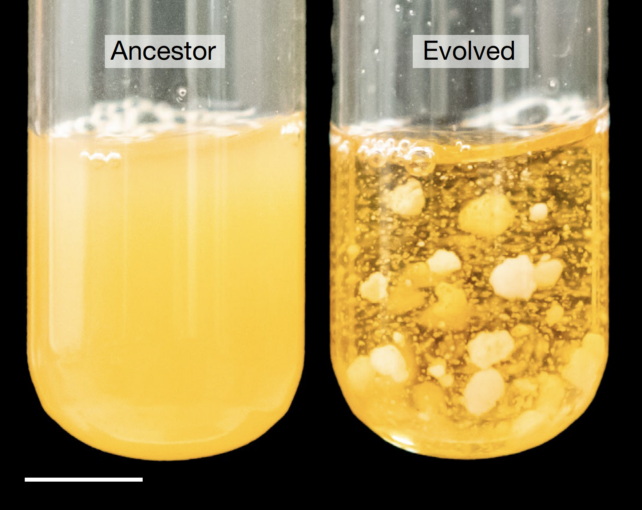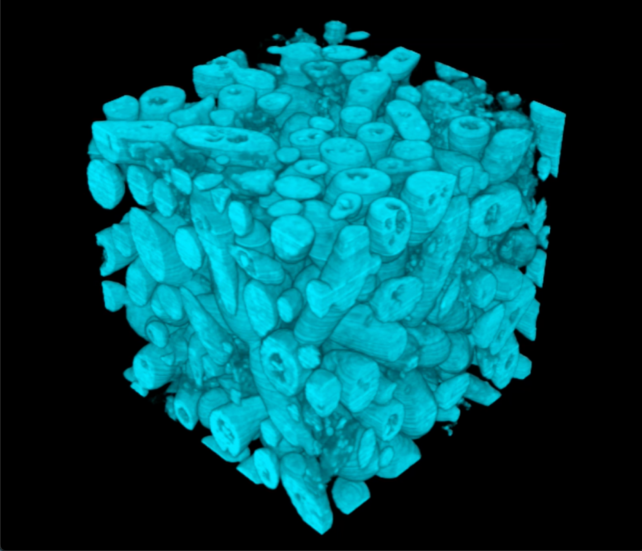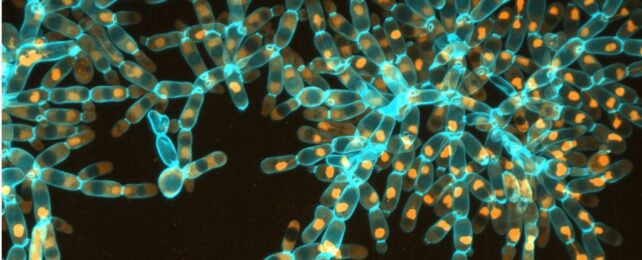What started as a single cell in 2018, invisible to the human eye, has now evolved into a multicellular beast about the size of a flea.
An ongoing study on a brewer's yeast (Saccharomyces cerevisiae), mutated to cluster as 'snowflake' yeast, shows what can happen to microscopic single-celled organisms after thousands of generations of careful selection.
When researchers at the Georgia Institute of Technology selected the largest and fastest-growing yeast clusters from five populations, generation on generation, they cultivated an organism containing over half a million clonal cells – 20,000 times larger than its ancestor.
The findings are an unmatched example of sustained multicellular evolution.
"By putting our finger on the scale of a single-celled organism's evolution, we can figure out how they evolved into progressively more complex and integrated multicellular organisms, and can study that process along the way," explains evolutionary biologist William Ratcliff from Georgia Tech.

Today, evidence suggests that life on Earth started with single cellular organisms roughly 3.5 billion years ago.
Yet little is known about how isolated cells that all looked and behaved the same evolved into multicellular life forms with specialized tissues capable of coordinated activity, roughly two to three billion years ago.
Experiments on snowflake yeast are now helping experts try and retell that story.
The study is called the Multicellularity Long-Term Evolution Experiment (MuLTEE), and researchers are hoping to run it for decades. The first major findings have come after 3,000 generations of evolution.
Already, researchers say, individual yeast populations have turned from substances "weaker than gelatin" to those "with the strength and toughness of wood".
"We discovered that there was a totally new physical mechanism that allowed the groups to grow to this very, very large size," explains evolutionary biologist Ozan Bozdag.
First, the yeast cells in experiments evolved larger branches that reduced the overall density of the organism.
Then, the branches tangled up with one another, forming a cluster that resembles the consistency of modern gels.
Ultimately, this new structure made the organism 10,000 times tougher than its single-celled ancestor. Not such a snowflake, anymore.

"The branches of the yeast had become entangled," explains Bozdag, "the cluster cells evolved vine-like behavior, wrapping around each other and strengthening the entire structure."
Another important finding of the experiments involved oxygen's role in setting limits on evolutionary progress.
In Earth's youth, oxygen was in short supply. It wasn't until a special type of bacteria 'breathed life' into the atmosphere a few billion years ago that multicellular lifeforms are thought to have really taken off.
The evolution of snowflake yeast in the lab supports the idea that oxygen was a significant constraint on the first multicellular life forms on Earth. In experiments, only the populations of yeast that didn't rely on oxygen to produce energy were capable of evolving to such large sizes.
Yeast clusters that required oxygen, on the other hand, were forced to split supplies among all of their cells, which created an extra cost to growing larger.
These findings, scientists say, underscore "the critical role of oxygen levels in the evolution of multicellular size."
"I'm really excited to have a model system where we can evolve early multicellular life over thousands of generations, harnessing the awesome power of modern science," says Ratcliff.
"In principle, we can understand everything that is happening, from the evolutionary cell biology to the biophysical traits which are directly under selection."
It will be fascinating to watch what happens to this yeast in the years to come.
The study was published in Nature.
